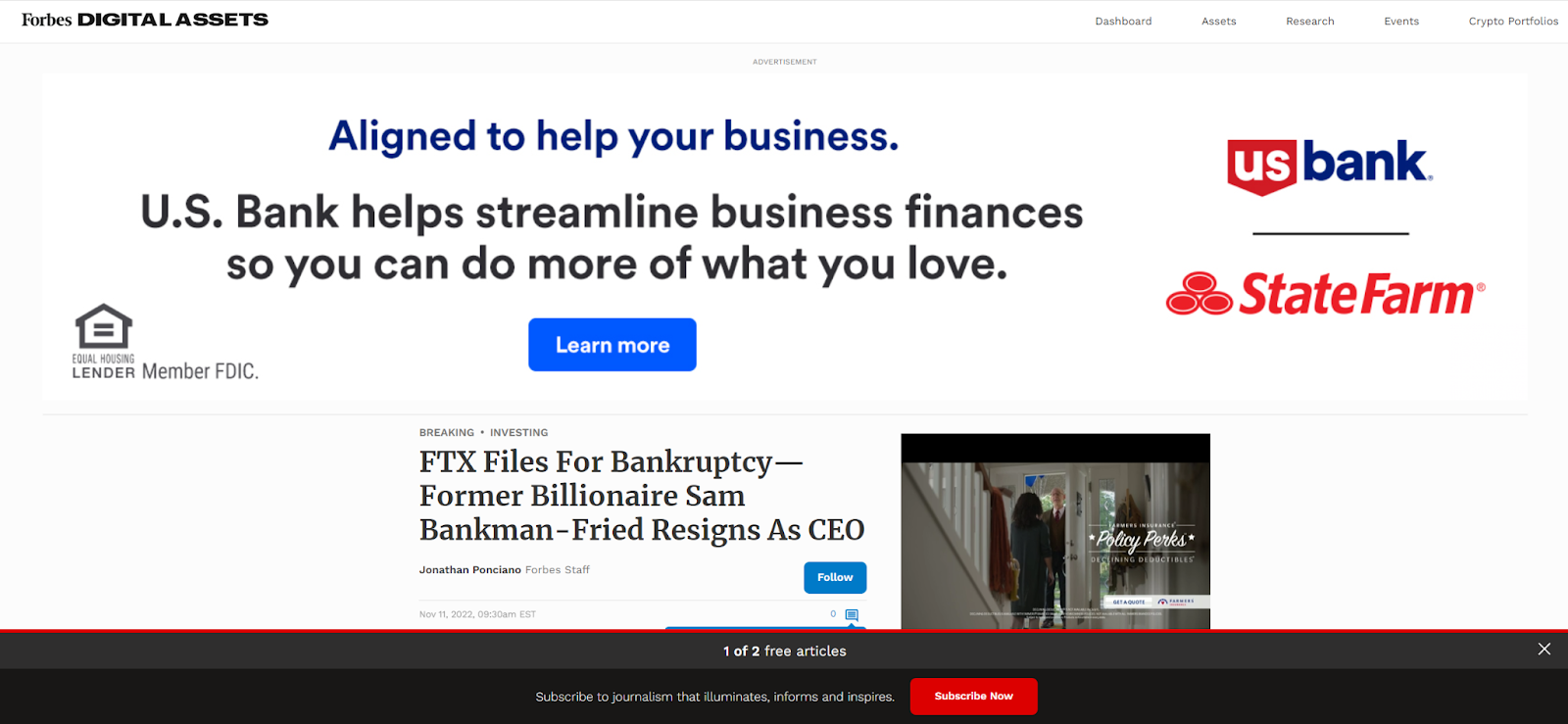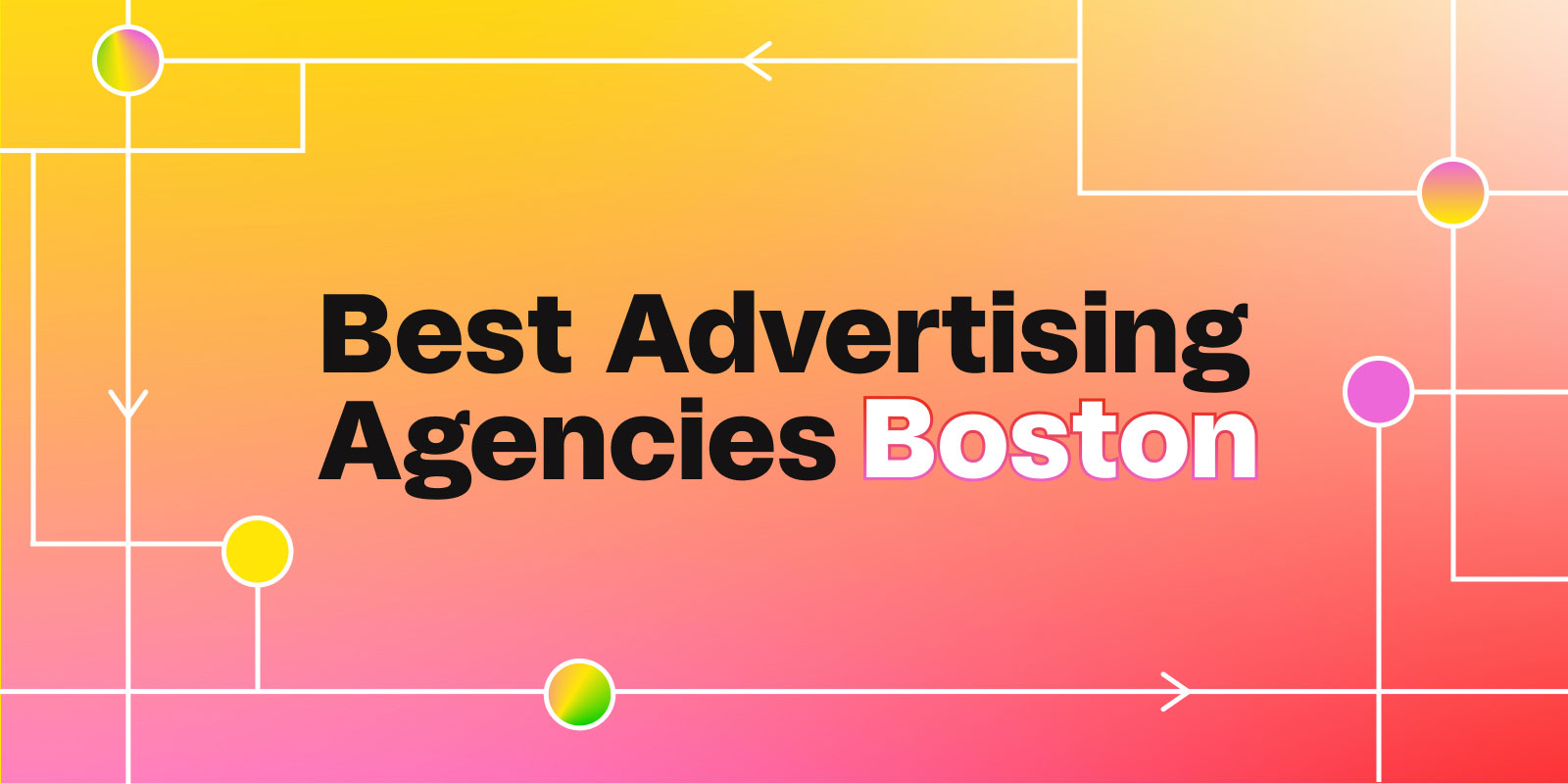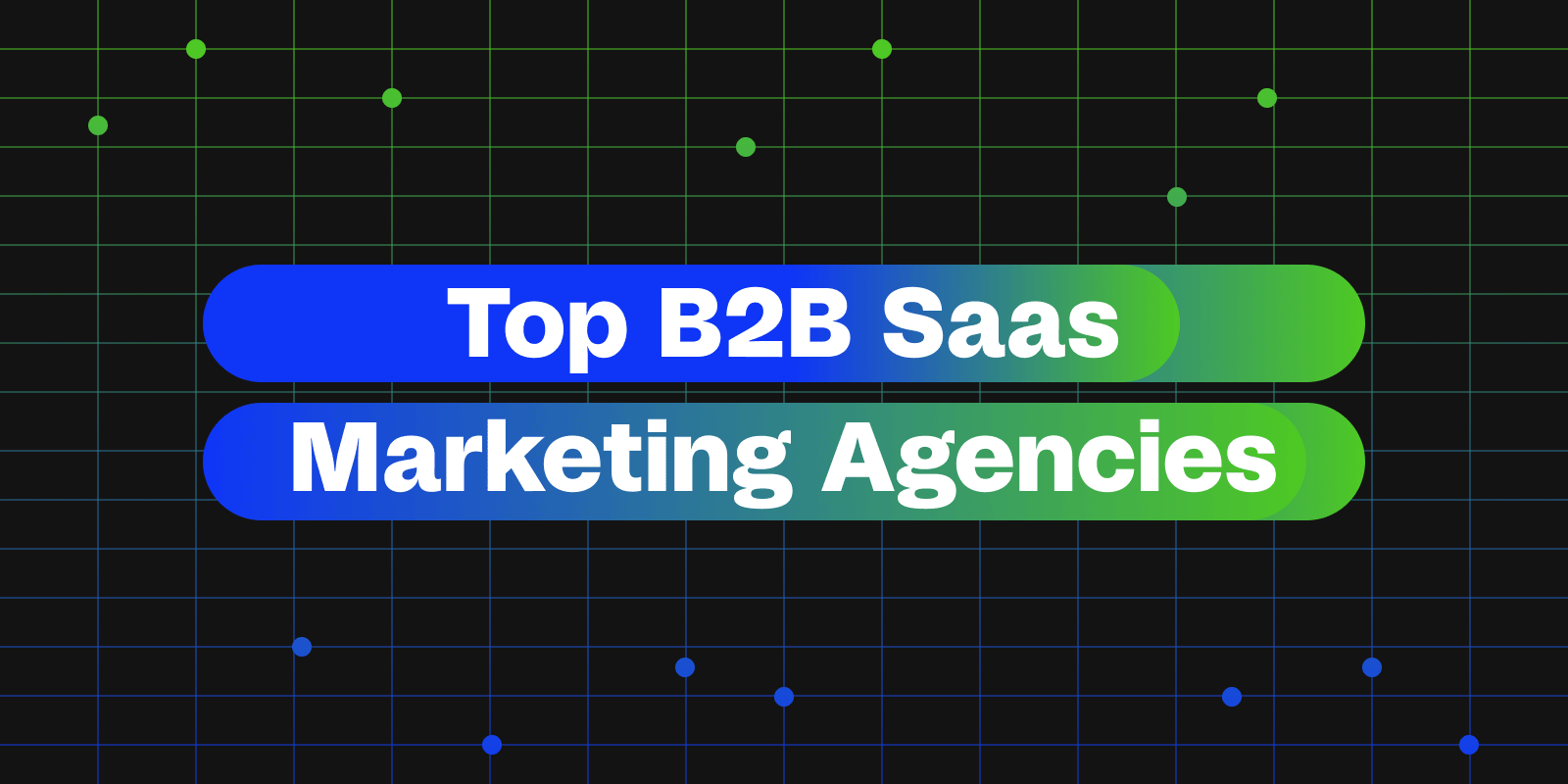As the competition among brands becomes increasingly fierce and companies have to perform at higher levels to earn consumer dollars, conversion rate optimization (CRO) has become more of a focus for marketing professionals. Beyond being a good process for periods of economic uncertainty, CRO practices are well worth implementing into your marketing efforts at frequent intervals to make ad spend go further and capitalize on lead funnels.
CRO includes all the activities that help improve the effectiveness of your marketing funnel and, while conversion rates may average 2-2.5%, if implemented properly CRO has the ability to significantly lower your CPAs and maximize the potential of your ad budget, and digital channels, including website, social, and email. While it may seem as though shop pages may be the most logical places to implement these strategies, they are universally applicable across home pages, service pages, blogs, landing pages, checkout flows, and anywhere else users are being driven to action.
Think of every step your potential customers or clients need to take in order to convert. Think of all the touchpoints they have with your brand along the way. You have the ability to improve each interaction with your brand and, as a result, convert more people into customers.
In this post, we walk you through what CRO is, why it is important, and how to properly do it.
When Does It Make Sense to Do CRO?
The short answer is that you should always be working on CRO. Yes, that may sound broad and pretentious, but let’s break it down. Independently of which stage your business is in, it can benefit from higher conversion rates.
For early-stage businesses and startups, CRO activities help you grow faster.
Investors are interested in how quickly they will see a return on their investment; and even if they’re in it for the long run, proving the viability of the product definitely puts them at ease and gives them the confidence they need to continue to invest.
It is typical that startups have to bootstrap themselves or work with a very limited budget that doesn’t allow them to break into the industry quickly and at scale. Having CRO as an internal framework will help startups achieve great results cheaper and faster.
For startups, CRO as a framework will help:
- Decrease the budget needed for digital advertising
- Increase the ROAS of every dollar spent online
- Build and expand userbase faster
- Gather a lot of qualitative and quantitive data fast
- Create a competitive advantage against bigger companies who are not employing effective marketing strategies
- Prove the business concept with strong KPIs
For mid-sized businesses, CRO will help you expand and get to the next level.
At this stage, every company is focused on getting to the next level and becoming the biggest or the best player in the field.
At this stage, businesses typically have larger advertising budgets and a more established positioning in the industry. Larger budgets enable these organizations to test extensively and every failed trial is actually an opportunity to learn and grow without creating irreversible damage.
Because these companies have had some success, they are looking to make it big. Since they are competing with other bigger companies who also have access to large funding, a competition based purely on the size of the budget will prove costly and damaging. So, it is important to not only have a large budget but also understand how to best employ these resources.
For mid-sized companies, CRO as a framework will help:
- Improve efficiencies of large budgets
Create new opportunities that can be tested and scaled before assigning larger chunks of the budget - Create even faster growth
- Invest into advertising and branding more effectively
- Higher ROAS create even larger budgets
- Rinse and repeat until you get to the top
For established market leaders, CRO will help you stay in the leader position.
Oftentimes, we assume that the largest player in the market is too large and too slow to see the change coming. Also, every small and medium player in the market is trying to poke holes in their approach and show the market how they are better than the leader.
To become a leader, and stay a leader, companies cannot rest on their laurels. They have to continually improve and innovate not only their offerings but also their marketing strategies. Besides, having very large advertising budgets and a recognized leadership position in the market all play to their advantage.
For market leaders, CRO as a framework will help:
- Create a competitive advantage over smaller players
- Secure sustainable, predictable growth that can be replicated again and again and again
Prevent competition from “sneaking up on them” by consistently growing their market share - Ensure that the human, time, financial, technological resources are utilized effectively
- Ensure that they stay on top of the market by continuously improving their marketing efforts
Importance of CRO as a Growth Lever
There are often multiple goals and KPIs in every business. However, there is usually one, the main goal that defines all activities within the business that support reaching it — typically this is increasing the revenue. But how do you increase it? Do you need more people making purchases on your website? Do you need more people to submit a form to get in touch with the sales team?
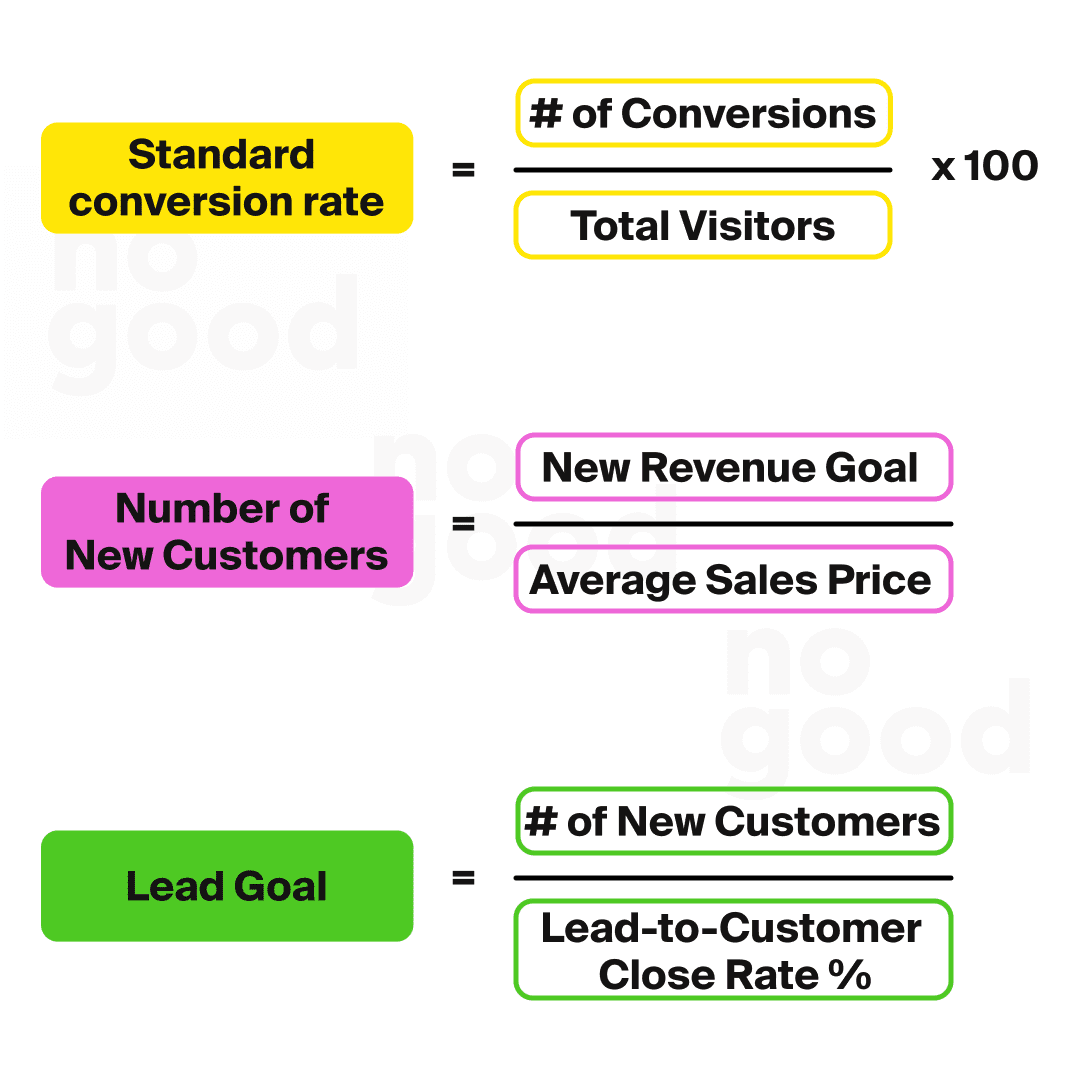
All steps along the digital customer journey should be built around — and encourage — that one target action. But to improve the conversion rate, you’ll need to deconstruct your whole funnel and improve the conversion rate at every step. You need to analyze the behavior and its driving forces at every interaction.
Building Your CRO Strategy
A method that many marketers implement to determine where to focus their attention is known as the PIE method. What this entails is as follows:
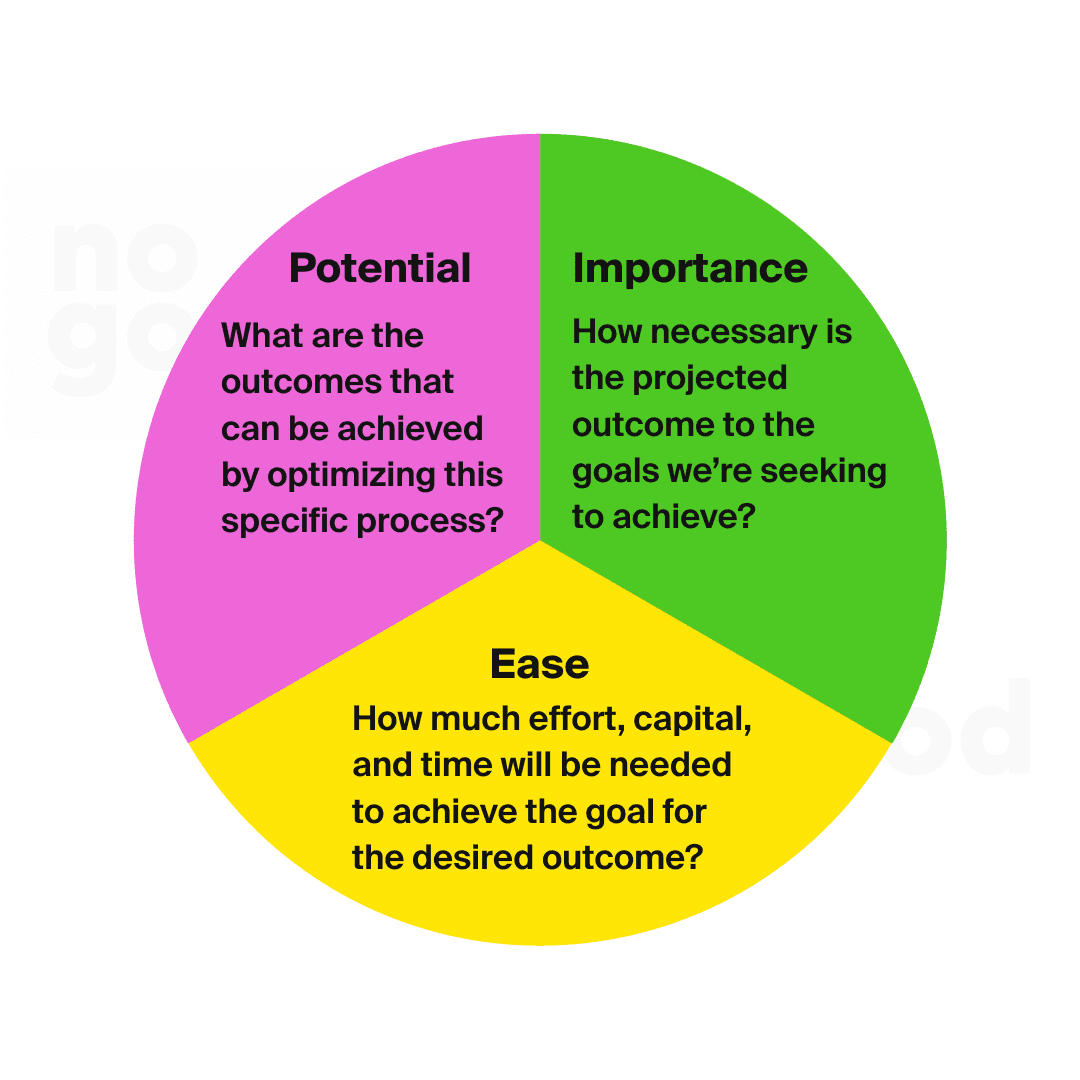
For example, if your main objective is to drive purchases on your website, you might want to take a look at the following mechanisms of your homepage through this lens:
Hero CTA:
Potential: Is the fastest pathway to conversions, but is currently below average and could see a 50% increase if brought up to standard rates
Importance: Is directly tied to website purchases, so would rank as high importance in this instance
Ease: Can be done manually and would instantly show impact
Organic Traffic:
Potential: While your site traffic is healthy, there are opportunities for SEO optimizations to drive new top-of-funnel users to the site
Importance: While new users coming to the site are great, they won’t likely be converting immediately, and so would rank as low importance
Ease: Would require hiring an outside SEO to optimize existing content and determine new content opportunities which could take weeks or months to see new traffic from
Hero Images:
Potential: Also the first touchpoint when people land on your site, a compelling new image could grab user attention and compel them to move further down the page to find more information
Importance: Feedback has indicated that current imagery is perceived as dated and deters users from converting due to the impression that the product may not be of high quality, and so would rank as high importance
Ease: Would require hiring outside creative, though turnaround would likely only be under a month with a moderate cost
As we look at the above information, it becomes relatively simple to generate a working strategy to begin optimizing our homepage conversions. Our first step would likely be to update the CTA from our hero section since it’s likely to have the highest impact, with the lowest effort and lead times. Second, we would likely hire an outside creative group to create new images for our hero section as that would also likely have a high impact in the short term, though with less ease. And finally, if budget and resources allow, we can bring in an outside SEO to optimize our content to assist in lead generation since, while not immediate, those new users that are generated will someday convert to leads — and likely more efficiently with our newly optimized hero section.
How do people find out about your proposition? What channel is the most appropriate to target them on? Where can you get the relevant traffic at the cheapest rate?
While this is an exercise that focuses specifically on our hero section conversions, the below framework has long been used as a way to approach building landing pages but is just as capably applied to all matter of content or conversion opportunity.
AIDA: Attention – Interest – Desire – Action
If you’re not familiar with the AIDA framework it’s likely time to add yet another acronym to your marketing vernacular. As mentioned, this typically applies to landing pages, and it will be explained here as such as that is typically where most conversions begin on our websites, though the same principles apply to nearly every facet of our marketing and brand presence — whether that’s on social, email, or elsewhere.
Attenion
For conversions, attention is earned and never given. It’s for this reason that attention is given priority not only in terms of the cadence of AIDA, but also in terms of the actual collateral that we’re building for our landing page.
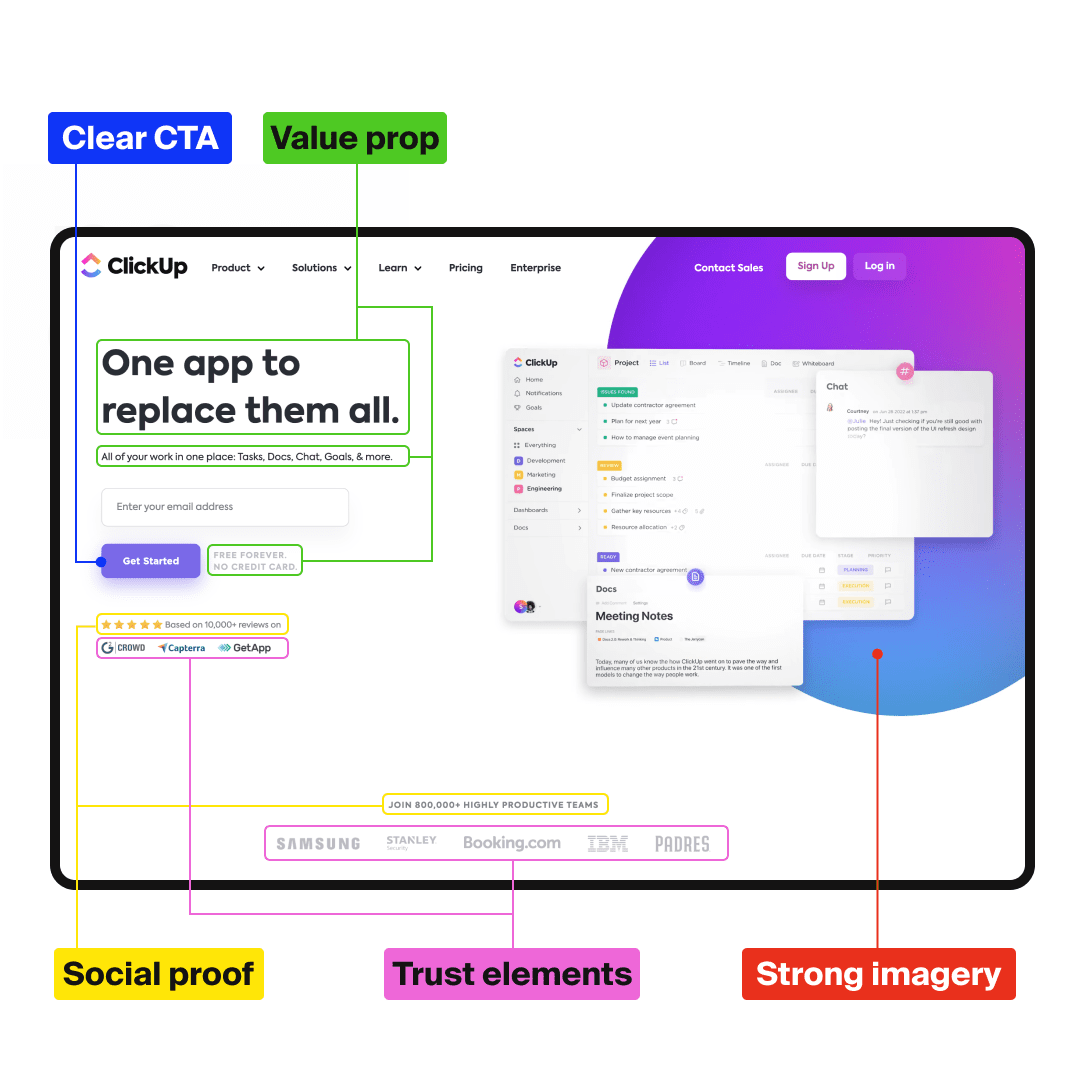
Because grabbing a user’s attention is of such importance, these parameters are typically applied to the avove-the-fold section (it’s called the HERO for a reason) of our site. This is your opportunity to not only make a first impression, but create intrigue and drive users down the page, and in the process further down the funnel.
While it is incredibly easy to become overwhelmed with just what it is that we are going to choose to set expectations for our brand, and by extension win customers, there are a few key elements that have proven to be crucial to winning attention.
Strong Imagery
Beautiful, bold imagery has been the calling card of a strong hero section since the advent to Web 2 — and for good reason. And while illustrations, artwork, photography and other form of visual components are still reigning supreme in above-the-fold real estate, video has been making waves for landing page creative in the same way as it has in our social feeds.
Similar to the time users afford to brands to grab their attention on social, landing pages also have just a few seconds to win users or lose them to the bounce. It’s for this reason that it’s paramount that our hero imagery or videos are not only evocative, but also clearly communicate to users what it is the brand sells.
Value proposition
Hooks in the hero section of our landing pages have become the headline to any brand collateral and shoudl be not only prominently displayed alongside your stunningly beautiful imagery, but done so in a way that tells users immediately what it is that you’re offering them.
While there’s a time and place for story telling, the hook is not one of them. In the same way we want to optimize headlines in our blog content by keeping them under 60 characters, we likely want to keep hooks even shorter.
Branding legend, Marty Neumeier, created an infastructure for developing brand value statements, or as he calls them, Onliness Statements.
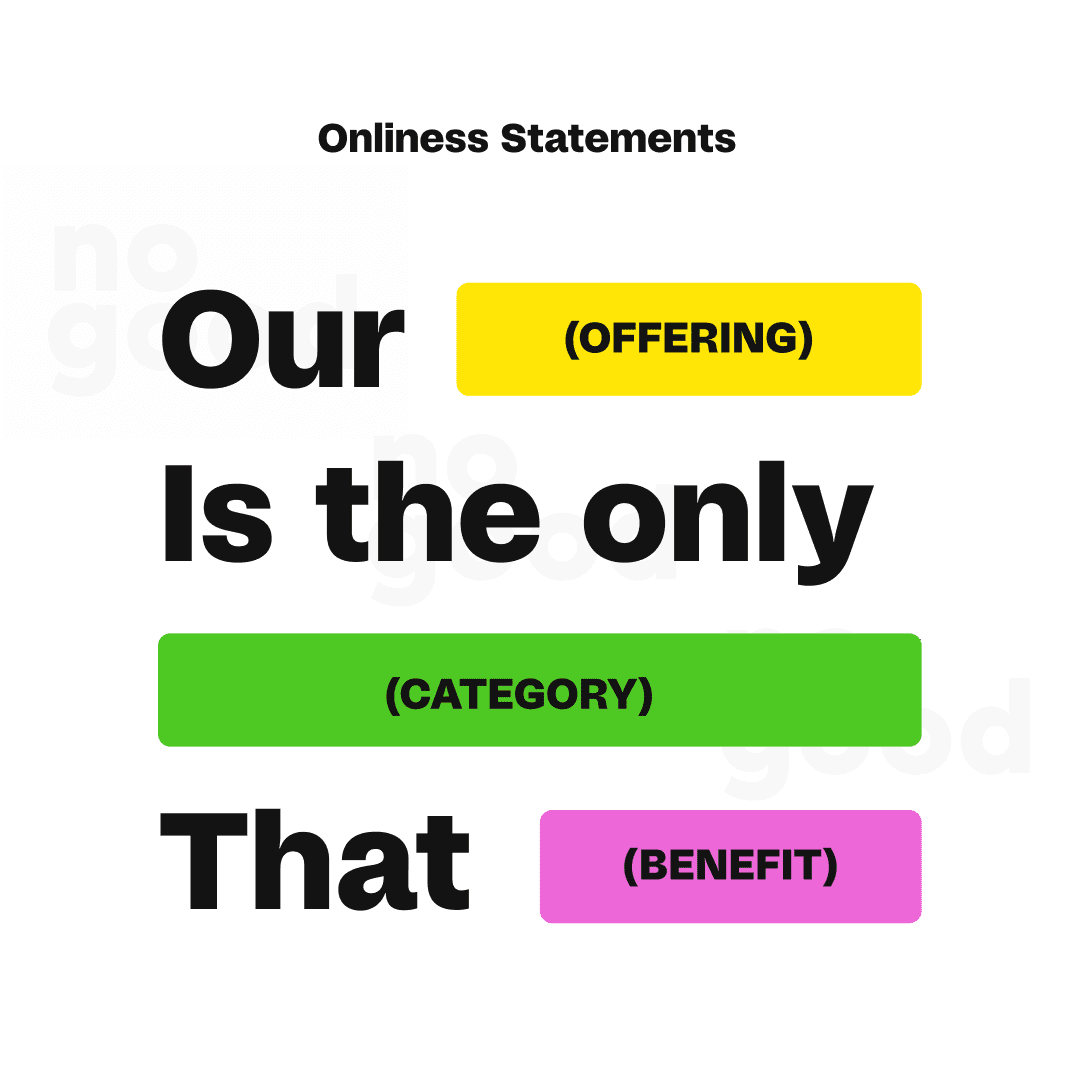
If this looks familiar, that’s not at all surprising as it’s been a staple for brands for writing value propositions for years, and is the most efficient formatting for determing what value a brand has. While the formatting is arguably fairly sterile, and maybe not super attention grabbing, it is still a good foundation to build off of if you were to be looking to write a hook for your brand.
For example, if we were to be building a hair care line and wanted to speak to the value of our hair conditioner we might write something like, “Our hair conditioner is the only cruelty-free beauty product that is organic.” Not bad, but kind of boring. If we were to use this as our baseline we could rewrite it to be more attention grabbing and say somethign like, “Loves animals? Love soft hair? Try our organic hair conditioner!”
Which brings us to…
Clear call to action
While navigating a website is fairly intuitive to most at this point in time, there’s still a need for guiding users down-funnel and giving them purpose once you’ve captured their atteniton. This comes in the form of a clear call to action which would either be incorporated into our value proposition as seen above with the “Try our organic hair conditioner!” or the form of a button or form that is not only prominently displayed, but actionable.
Social proof
Social proof is exactly what it sounds like, it’s some sort of validation from someone that’s not the brand to prove to the user that your product is reputable and that others have not only tried it, but would recommend it to others.
It may seem as though we may be very quickly crowding our hero section, and you would be right if all of these elements were crowded together and separate. They can be, however, and often are, combined in some capacity to make the elements collectively stronger.
In the instance of social proof, this could mean incorporating a photo of a prominent and well regarded content creator in your hero image to grab attention of users who might align with that particular creator, or even having a quote from that content creator as a part of your hook.
Additionally, if you wanted to incoporate a more broad proof to your process, you coudl have a statement that calls out the number of 5-star reviews your product has had, or another similar metric to communicate to users that your brand is loved by many people.
Trust elements
These sit complimentary to our social proof as validation that a brand has been vetted on a professional level in order to prove to users that a business is, in fact, legit.
While many of us may not thing twice before clicking a banner ad and pasting our credit card information into a website’s check-out page, in the realm of start-up products and pre-orders, users have become wary of being burned and often want to know that they will actually receive the product they’re ordering before handing over their digital cash.
This proof can be as simple as adding the logos of the various payment methods your site accepts to prove that your brand is trusted to process payments, or even offers Klarna as a payment installation partner. Additionally, the logos of any press outfits that have featured the brand, or even badges to show certifications or accolades that the business have earned can help to build confidence in users landing and help drive them further down the funnel.
Interest
Okay, you’ve gotten the user’s attention, now what? Well, you now have to build their interest. This is an opportunity to build on your value proposition as the user moves forward in their journey to conversion, so keeping in mind our onliness statement, and building sections of our landing page, or other content, will help to frame our product in a way that piques interest and helps warm leads.
A few simple ways to approach this can be…
Benefits
Features are a dirty word when trying to build interest as they don’t speak directly to the user. Here, let’s look at this example:
Feature:
This tooth brush has a milliion bristles.
Benefit:
Our tooth brush polishes 10x better than our closest competitor because of our patented bristle density.
By spelling out the benefits to a user, you not only are able to convey to them what it is your product does, but what it can do for them.
How to
Explaining how to use a product can be particularly useful in building interest, especially when it comes to products or new features that may not be particularly familiar to a user or if you’re developing a new category that users may not be familiar with.
Using the tooth brush again as an example, we may provide users with a diagram showing them the way that we recommend brushing with our tooth brush vs. traditional tooth brushes, or even have a step by step guide that walks them through the process.
Bullet points
Lists are great and incredibly efficient for building interest, if for no other reason than they make it easy for users to skim and quickly gather information as they make their way down screen.
While some users may love a 5000 word essay explaining the step-by-step process that was used to develop our toothbrush technology, a bulleted list can go just as far with a few key pieces of information in list form.
How we built meta-brush:
- Surveyed and interview over 1M people with teeth
- Consulted with the top 10 tooth professionals in the world
- Hired the world’s top engineers to build our bristle technology
This is a simple and effective way to plant the seed of interest and link users to more information if they’ve decided they want to consume more without immediately overwhelming them if all they’re looking for is the key components of what they’re curious about.
Desire
Desire is typically an expansion on the social proof and trust elements from our hero section. While it doesn’t necessarily have to be a 1:1 expansion on the reviews or testimonials mentioned above the fold, it should be a more robust offering in order to continue to build the relationship with the user and help drive them to conversion.
In additon to adding more reviews, accolades, and testimonials further down the page, the additon of case studies can be a fantastic opportunity for brands to flex and have a section of their content or landing page that is dedicated to data points that support the benefits of the business and solidify the value proposition.
Action
In the same way that our hero section had a clear call-to-action above the fold, each subsequent section should too include a CTA to bring users to pursue the different journeys we’ve mapped for them on our site.
The “how we built meta-brush” section can have a CTA to read the full story of how the product was made. The added call-outs of the different publications can drive users to read more about what various publications are saying about the brand. The how-to section can call users to click through to a video tutorial that visualls guides users to using the meta-brush themselves.
As we map the customer journey, it’s important to make sure that each CTA offers a new value to users, and helps not only guide them to conversion, but also answer questions they may along the way.
A few things to keep in mind as you build your Call-To-Action:
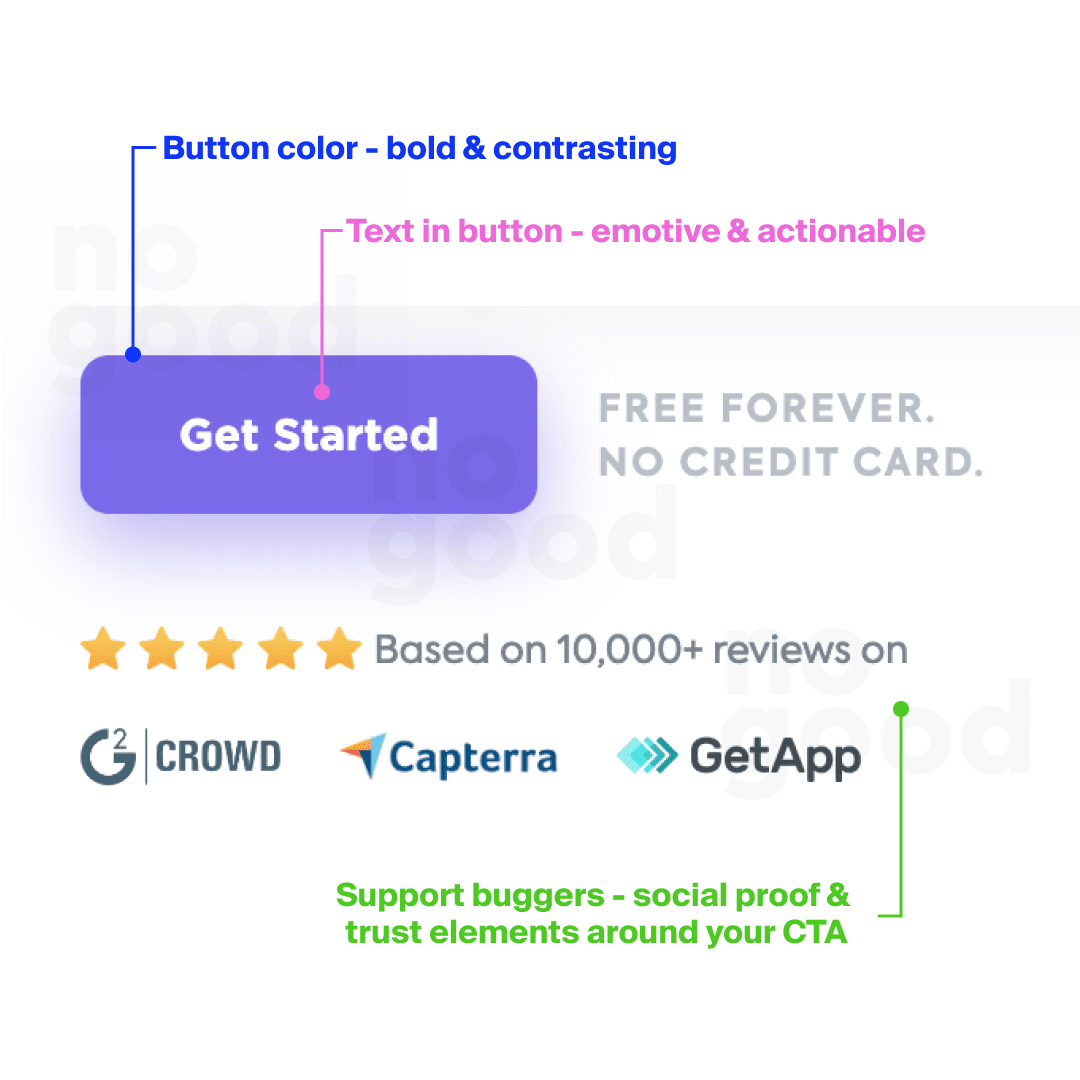
How to Approach CRO Strategy
Just like with most other marketing activities, conversion rate optimization is not a “set and forget” deal. It is a continuous process of improvement. This is due to the fact that there is no limit to the number of improvements that can be made in any business. There are also many outside factors as well, such as competitive landscape, behavioral influences, and messaging adjustments.
As you may see, there are a lot of outside forces that affect consumer behavior on your website. So, it is not only about the internal factors that you may control, such as polishing your messaging or improving usability. It is also about being keenly aware of what’s happening in the market and which trends are affecting behaviors. It may seem like a hefty undertaking, and it definitely is. However, investing in CRO will continue to pay dividends in terms of an increased customer base, decreased advertising costs, and higher returns.
Researching Your CRO Strategy
At this point, it should be apparent that there are quite an innumerable number of ways, places, and opportunities to optimize conversions within a business’s operations. This begs the question, “How do we determine what to optimize, when, and why?”
In the same way, as we detailed the PIE method previously, there’s a fairly formulaic way to approach your CRO strategy which in many ways mirrors the traditional marketing processes.
By controlling the steps of the process, and creating a structure to the approach, we not only create parameters to ensure we are able to effectively determine accurate attributions for outcomes but also ensure that our decisions are made based on data rather than impulse.
Choosing Goals
This should look familiar to anyone who has ever been tasked with creating a marketing campaign as it mirrors the first step to almost every campaign ideation process. Before we bring in creative before we started writing headlines before we even start researching campaign concepts or anything else we must first look at our data and determine just what it is we want to optimize.
This can, unsurprisingly, take a number of different forms — as previously mentioned. These goals should directly reflect the mechanism of our marketing stack that we are seeking to optimize, as otherwise there will be inefficiencies in our reporting, and an inability to properly control our optimization efforts.
While not exhaustive, the most common goals tend to be:
Increase subscribers:
Email lists provide businesses with a captive audience and a direct line of contact with their communities, naturally growing these lists are often a focus of CRO campaigns. While there are many avenues to getting users to click subscribe, we most often see success in strong value propositions paired with prominently displayed, and easy-to-access pathways to subscribe.
Registering users:
Registering users sits complimentary to getting new subscribers, particularly for any business selling a product or service with repeat business. While CRO does technically start for conversion rate optimization the conversion rate, in this instance, would refer to converting users to registered users to not only move them further down the funnel but position them in a place where they can be targeted directly with new promotions and drive them to purchase.
Downloading content:
Guides, checklists, creative assets, or other forms of digital leave-behinds have become the modern form of marketing collateral that once took the form of postcards and other tangible materials. Driving users to download your content, particularly something they can use frequently is a great mechanism for building brand awareness and providing value to users while remaining top of mind every time they use it.
Spending time on site:
While yes, CRO is technically meant to act as a practice to convert users faster, there is always the scenario that users are clicking onto your site, social, or email, and immediately exiting — without even having the chance to drive them down funnel ot conversion. By increasing time spent on site, you’ll be directly decreasing bounce rate, while capturing more data about user behavior to determine user behavior and opportunities to convert.
Completing purchase
Coffee is for closers. But sometimes the closing can be a difficult part of the conversion journey and have to focus your attention on converting those add-to-carts to purchases. It may take removing steps from the conversion process, offering free shipping or other incentives, or just making check-out boxes more intuitive for users — so long as you get users to convert.
Up-selling
CRO but we’re optimizing the conversions themselves. Wild, right? Not so much. If our main KPI is to drive more revenue and we already have a healthy funnel that is converting at well above industry standards and, despite our best efforts, is not getting any more efficient, the logical next step is to try to increase spend on each conversion. This belt would look great with those pants.
Mapping the Customer Journey
Once you’ve determined just exactly where you’re looking to create your optimizations, the next step is to map out the customer journey since this will provide us the most immediate insights into where inefficiencies are occurring, where we’re losing customers, and what can be done to remedy any issues we may discover.
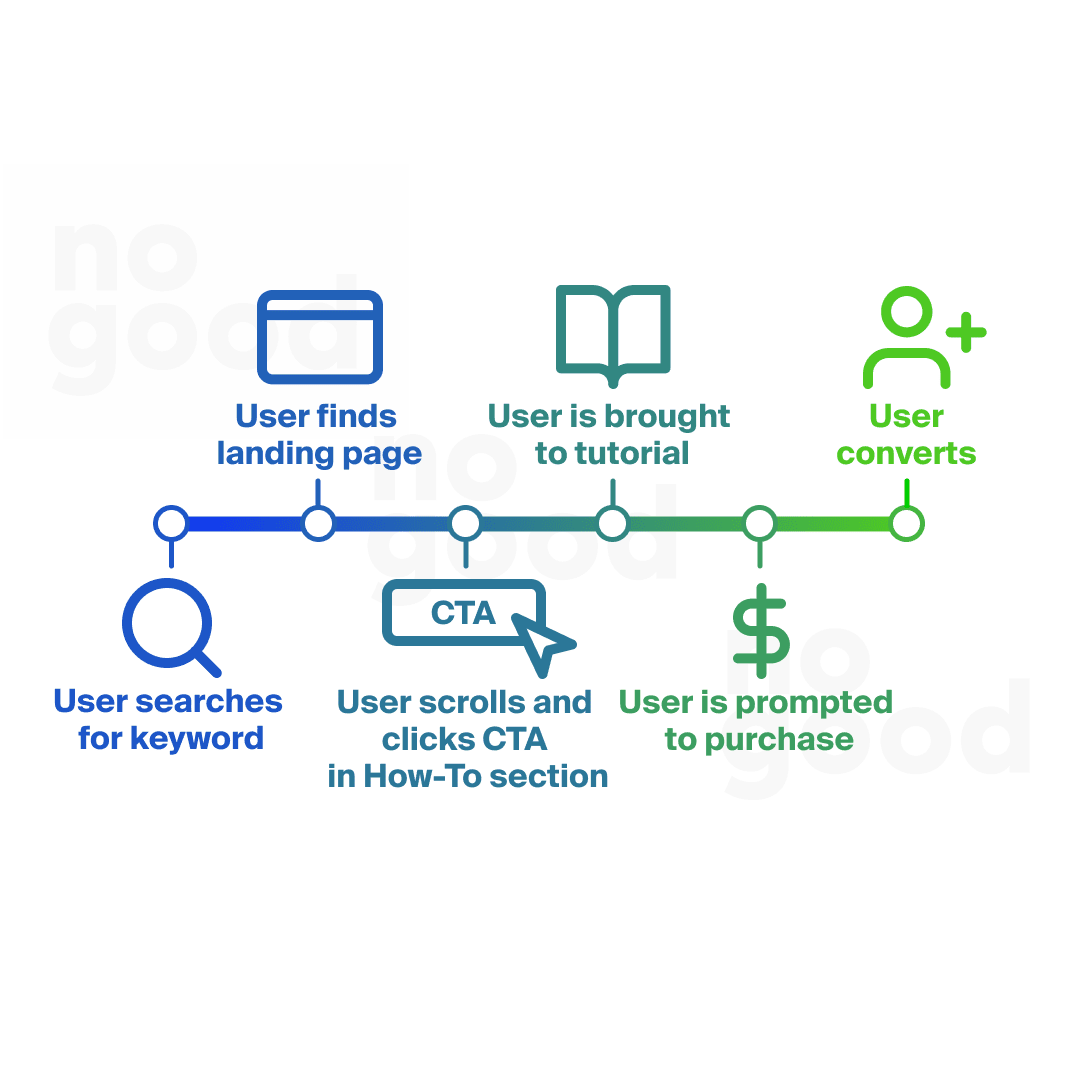
Where are they landing?
Understanding where users are landing can give you the greatest insight into not only what is driving them to your site, social, email, or other platforms, but also allow you to most effectively track them through their journey to find other inefficiencies down the funnel.
By understanding where users are landing, you are provided with a number of optimization opportunities. One for optimizing the mechanism that is driving them to you in the first place and increase potential leads to drive down the funnel. And one for each stage of the funnel once they’ve landed.
What actions are they taking?
These would be where the users wind up, or places where they pass through once they’ve landed. Do they click your CTA? Do they wind up on your blog? Do they immediately bounce? Maybe they go directly to purchase?
Understanding their actions once they’ve landed will help to determine the place where you implement your PIE method as you start building your optimization strategy.
Where are they leaving?
While this may often be a difficult optimization to make, there’s something to be said for putting the effort towards remediating bounces once users reach your site as, next to revenue, one of the main goals for any business is keeping users on-site as long as possible.
Yes, it’s entirely possible to attract users back once they’ve left with retargeting, but that’s extra ad dollars spent and an increased opportunity for them to never come back again.
Who are they?
Understanding customers can be helpful for optimizations in a number of ways. Aside from understanding their potential behavioral predispositions on your site, and what the likely pathways are to purchase, by understanding who these customers are you can also understand…
What are their motivations?
This is more so the fuel for your optimization strategies than anything as it will likely inform the strategic positioning and creative decision-making steps to optimize your site, social, or email. Different CTA languages may be more effective on different platforms based on fluctuations and nuances in the customers’ makeup — the same goes for visual decisions and a number of other factors that are reflected in our brand visuals and language.
Determine Road Blocks
Once you’ve identified where it is you’re looking to create optimizations in your conversion journey, the next step of the process is to isolate where it is that users are getting lost in the journey, and more importantly why they’re getting lost. There are often barriers within the journey that will, despite intention to convert, dissuade users from making that important decision to do so.
In the same way that we are constantly vying for attention with our content, it’s equally as easy for users to lose interest while moving down funnel and make the decision to bounce — never to be seen ever again.
These roadblocks, as with the previous examples, can vary from simple fixes to remove arbitrary annoyances in the user journey and user experience on your site, to incredibly complex, multi-month projects that can require outside consultation or even hiring new team members or entire new teams.
Hard to read fonts
The days of Angelfire and Geocities website are far behind us, and for the most part that’s a good thing. While the early days of website design were very much experimental and, more or less, anything was acceptable — that is no longer the case and accessibility is very much a thing now.
Beyond being a nuisance to users who might struggle to read the content on your site, understand the directions they’re being given, or even find their way to where they intend to go, having difficult-to-read fonts can limit your traffic by being a barrier to users being able to your site at all — despite their best efforts.
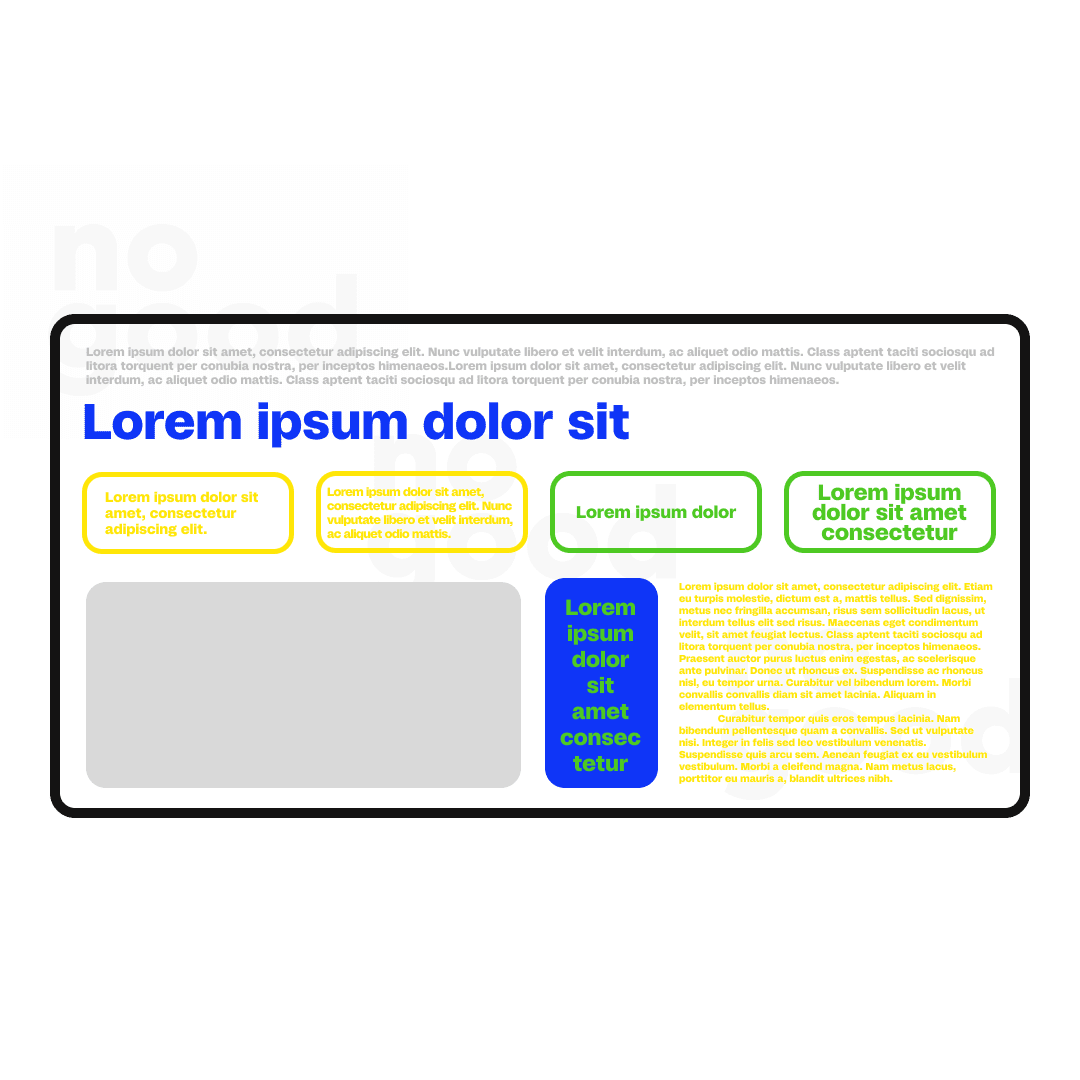
While it’s absolutely valid to want to extend your carefully crafted brand to all reaches of your brand’s presence, when making branding decisions related to fonts it’s best to test readability not only at different resolutions but on various screens and with all of your brand color combinations to ensure readability in all instances before committing to any branding decisions that may inhibit conversions.
Slow-loading pages
Yes, you spent a lot of money on that photo shoot to create an incredibly beautiful animation for the hero section of your website. And we understand that compression is a word not one of us wants to hear when it relates to our carefully crafted creative, however, it is a fact of life.
Is it important to wow users when they land on your page and show them that you do, in fact, have an incredible thing that you want to share with them? Of course. But also, we don’t all always have access to 5G satellite Elon Musk super fast uber fiber-network wifi. And if we don’t, then that makes a massive impact on our enjoyability of a site’s experience if there are slow load times.
In the same way that we have under 5 seconds to win audiences with our content, if a page takes more than a few seconds to load and move users quickly through their journey, then it’s very likely we’re going to lose them.
There are many magic numbers that float around the internet about where to cap your file sizes, and these range anywhere from 4-20 MB per image. But the reality is that you should always strive to keep images as small as possible without sacrificing quality too severely, and of course always be testing loading times to ensure that if a page happens to have more images or possibly embedded videos, it’s not going to be deterring users from clicking.
Questionable testimonials
It’s become fairly standard practice for newly launched products to give promo codes to friends, family, content creators, and others within immediate proximity in order to not only ensure that your site doesn’t immediately burst into flames upon launch, but also build up a convincing roster of testimonials as validation for your product when you start pushing public-facing campaigns.
This has become the standard for a reason because it works, but as users and consumers become savvier, it’s important that Aunt Gerty provides an accurate and believable account of her experience with your product or service.
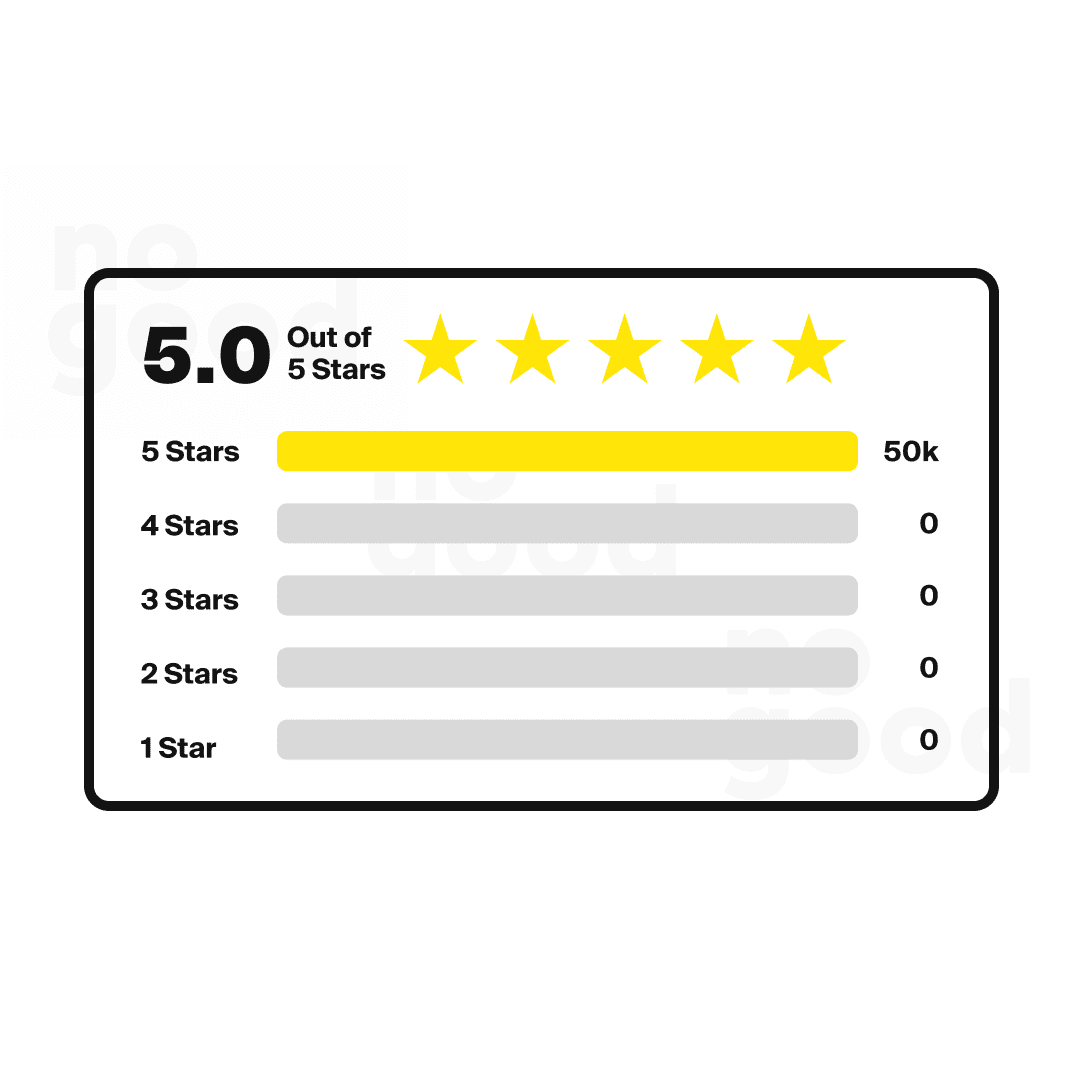
While negative reviews are a bitter pill to swallow in many instances, they’re in no way a scarlet letter for brands, and in many cases, if there are 50k positive reviews and 0 negative reviews that dip below the 3-star threshold, users begin to become somewhat suspicious.
The purpose of our socials, our sites, and our emails, are obviously to make us look good and present both our brand and product in the best light possible, though it’s important to not be too overzealous and create a user experience that is believable and genuine.
Boring CTAs
There’s an incredible video that exists on the internet which has a fairly simple direction for user testing and designing for users, “Assume the user is drunk.”
While this may seem harsh, and in some cases it is, the reality is that anyone that has ever tested a site or mapped a user journey on a site or app will likely have some sort of horror story or unresolved trauma from an ingeniously dumb way a user broke their site or app.
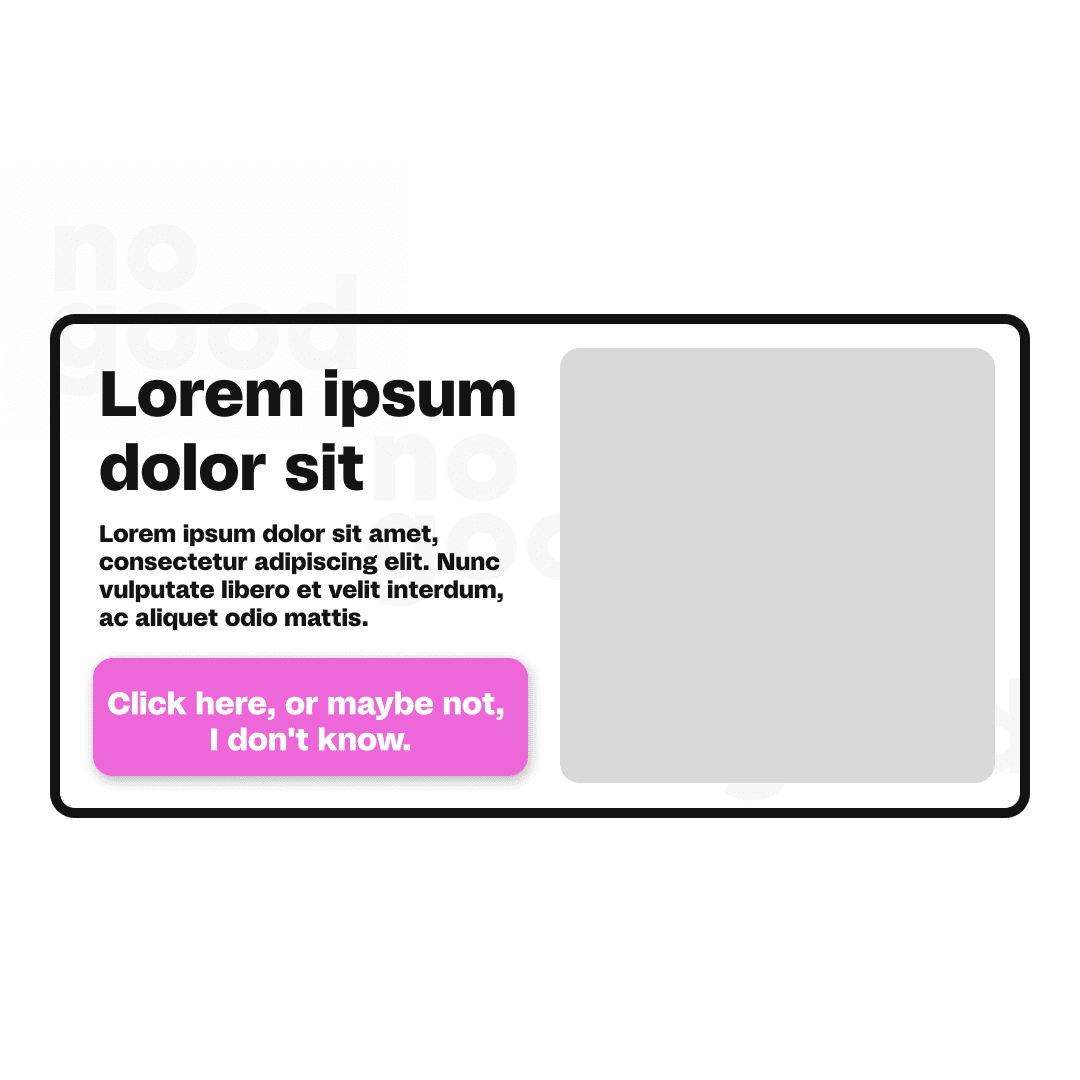
It’s for this reason we need to make sure our CTAs are not only clear but interesting and engaging enough to grab a user’s attention as they move down a page or through a site journey.
In the same way, we want to make our own content stop the scroll when designing ad creative, we want the CTAs on our site to stop the scroll, demand user attention, and encourage clicks.
Intrusive Ads & Pop-Ups
The user journey is called such because it is, in fact, a journey. It’s a dance between the site and user where they are presented with questions, then the answers to those questions, gentle nudges in certain directions, instructions, and then finally the compelling call to convert.
There is nothing that will break this immersion more than a poorly placed pop-up or a pushy ad or an otherwise unwelcomed disruption to the user journey.
This isn’t to say that pop-ups shouldn’t be used, but they should be used intentionally and monitored to ensure that they can’t be attributed to any patterns in bounce rates. Too high up on a page and an offer or pop-up can make users feel as though they’re being pushed too hard because they haven’t even had the chance to see what the page is about or what information they’re being provided before getting asked for an email or other action. Conversely, having the ask too far down the page can lead to users landing on a page, getting the information they came for, and then bouncing before they’ve even triggered the pop-up, to begin with.
This is very much an area where it is helpful to put ourselves in the seat of the user and imagine ourselves in their place as they experience the page, app, or other pieces of media. At what point on the page do we feel satiated enough to want more, but not so fully satiated that we’re on the verge of bouncing? Somewhere in the middle is where we want to slide in the ask.
Disconnect between headlines and content
This one goes out to all the SEOs out there, because there’s nothing more confusing and bounce-inducing than landing on a page after searching for a key term, reading a headline, and then wondering to yourself 3 sentences in, “Where the heck am I?”
While particularly true of H1s and introductions as they are, by nature, the sections of a page that will make or break decisions for audiences to scroll past the fold, it’s also true of headlines and content for all subsequent sections of our content.
This is often a sign of lazy SEO and an attempt to quickly optimize content to rank for specific terms, assuming that the headlines and paragraphs are related sufficiently without needing to edit them further to cater to the new term that they’re meaning to rank for. And while sometimes that is absolutely valid and will achieve the desired results because a piece was previously improperly optimized — it’s best to be thorough.
Content not targeted to audience
Throwing it back to the “Who are they?” section of our customer journey mapping exercise, this is one of the many instances where it’s important to not only understand who the audience is, but how to properly speak to them and appeal to their needs and desires.
While there is absolutely something to be said for being thorough and providing in-depth, thought-provoking, thought-leadership in your content, or ensuring that you are the most expert voice in all of the internets on a certain subject — it won’t mean anything if your audience is comprised primarily of 3rd graders.
This is nothing against third graders, as we personally love painting with our hands, but it’s as much to say that you need to present your content to your audience in a way that they are able to digest, understand, and that will resonate with them.
CRO Testing Framework
The framework I like to use and refer to is one by our friends at Moz. It goes something like this.
Step 1: List hypotheses
From the previous data, analysis, PIE frameworks, and other prelimary research we’ve done, we should have a general idea of the tests we’d like to pursue, and the potential outcomes of those tests — or at the very least the potential methods we’ll be using to gain those outcomes.
To put those concepts into a scientific framework, we like to frame all of our CRO tests as hypotheses to not only simplify the process but ensure that there aren’t unaccounted-for variables that might muddy up our results or create false positives for the attribution of our results.
Put simply, the framework for creating a hypothesis is as follows:
If I do (action) then (result) will happen because of (user action).
If we were to frame this for our previous experiment encouraging clicks for our hero banner then our hypothesis might be looking something like:
If I (update the banner creative) then (users will click more) because (they will be more engaged by our hero section).
However, testing doesn’t always just mean testing a single component.
Step 2: Determine Test Types
A/B
A/B testing is exactly what it sounds like, testing one version of something against another. This is a fairly simple way to approach the testing framework as it leaves very little opportunity for error or misattribution to results — either positive or negative.
If a single change is made, then any observable difference in outcomes can fairly safely be attributed to that change assuming that there haven’t been significant other changes to the immediate contextual landscape of a site or other sites that are directing users on their journey to that site — though even if changes on other sites impact traffic to a specific page it is unlikely that those changes will impact outcomes on the page itself.
Multivariate
Unlike A/B testing where a single change is tested against the previous performance of a site or page, multivariate testing can test multiple hypotheses simultaneously while still implementing control to ensure that there is a mechanism in place to allow accurate reporting and attribution of the results given from the changes.
These tests become more complex in nature because there are considerations that have to be made and hypotheses made for our hypothesis.
If we alter our original test of changing the hero image but set our goal to have people scroll further down the page to click on a mid-scroll pop-up we will also be optimizing with a new CTA button that is more legible to users and has a more compelling copy, that’s fine, we just need to do a bit of extra work in our reporting.
In this instance, if we see an increase in triggers of our mid-scroll pop-up as well as an increase in time spent on a page, we can attribute that our hero updates have been successful in keeping users on the page longer. However, this is where things get a bit tricky (you got this). Many would also see an increase in clicks on the mid-scroll pop-up and attribute that increase to the changes made to the pop-up — not necessarily the case.
Since we’ve implemented changes in our hero section to intentionally get more users to trigger the pop-up, then we will naturally get more clicks as a result of the increase in the volume of users seeing the pop-up. If we want accurate evidence of the efficacy of our updated pop-up we’ll need to measure the click-through rate (CTR) to determine if there’s been an increase in conversions, and so we would implement the same formula as we would to determine the conversion rate:
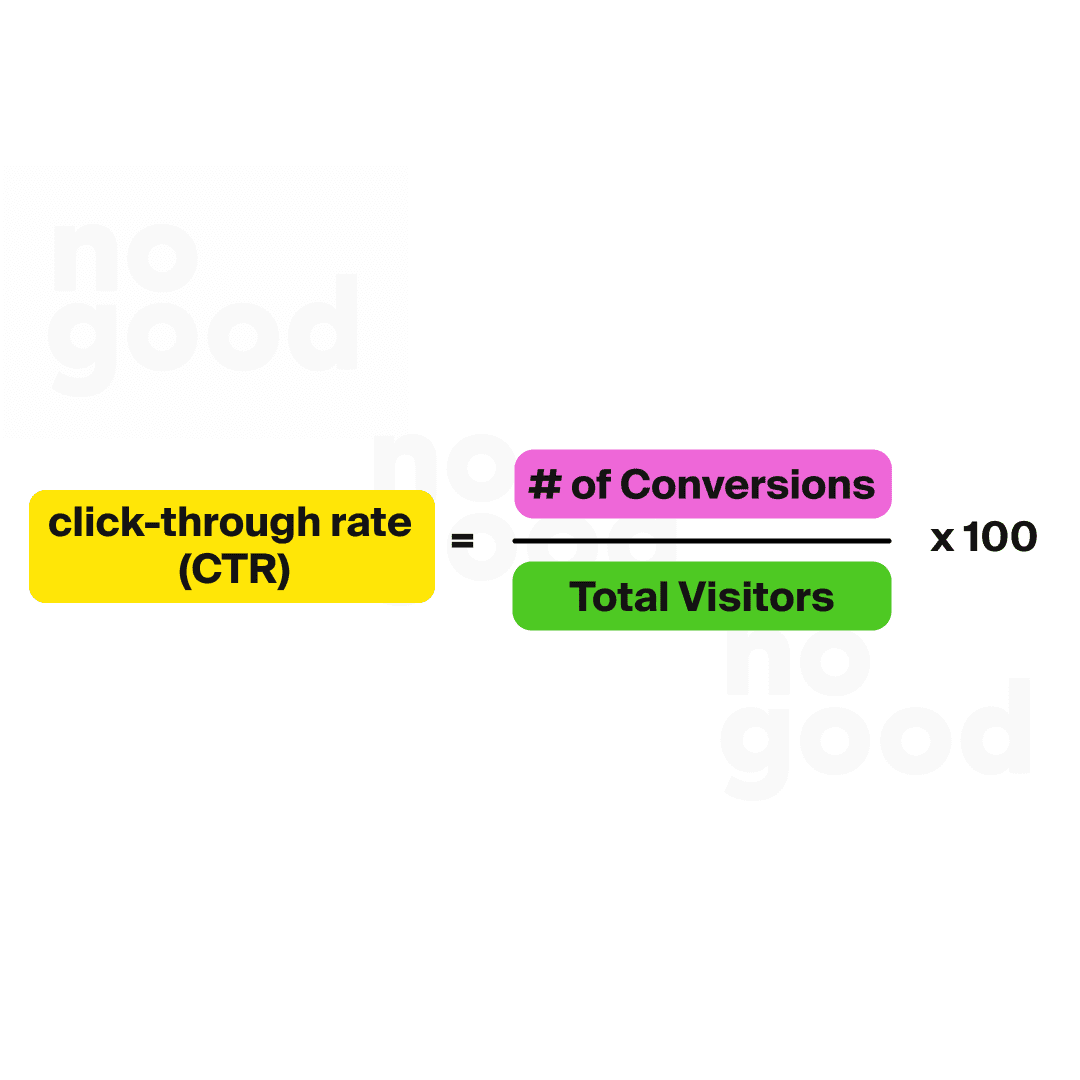
Step 3: Time to Test
It’s been quite a journey already, but it’s finally time to test. You have your data, you have your hypothesis, you understand your roadblocks, and it’s time to set up the tests and GO!
And while we have discussed a few solutions to some roadblocks, and some examples of different CRO tests that may be helpful to leverage to overcome those roadblocks, there are a number of standard tests that are worth mentioning as you launch your testing.
Adding Mid-blog Text CTAs
While CTAs are often a great way to overtly call users to an action, it’s also sometimes worth stealthily adding a CTA into a piece of content to make it less of a hard sale and arguably even trick users into clicking through to an offer.
As we have more of a focus on community-led growth, these tactics of incorporating CTAs organically into our content offerings are increasingly becoming the standard, often paired with some more direct CTAs for those who may not click on the blue text in a blog post (see what we did there?).
This can also help to fight banner blindness as users have been proven to instinctually ignore anything that is presented in the form of a banner as they associate the format with ads and block them from their minds.
Lead flows
While it is easy to get fixated on the click, it’s also important to focus on where the click goes. As we look at CRO as a means of getting users through the journey, our testing should also serve as a mechanism for creating a more streamlined journey to conversion.
While a pop-up on a homepage asking for an email address within the first five seconds may be abrasive to most users, there can be an incentive added to the pop-up to not only entice users to convert but do so with a significantly shorter journey.
Observing successful journeys can give insights into what processes are most successful on a site, and testing incentives at various touch points throughout the journey can help to determine if there’s an opportunity to drive users to conversions at earlier points if given an incentive.
Automated Workflows
Despite the next section (spoiler alert) focusing on adding human touches to the customer journey, the opposite can also be true in optimizing conversions as removing labor from the process is as much an optimization as removing a click.
While abandon cart flows and pop-ups are the most well-known automation in CRO, there are other processes that can be automated in order to move users more quickly down-funnel while requiring less lift from your teams.
For example, having an automated email response from an MQL form that sends the user an email with an introduction and a calend.ly link to schedule time with a sales member can remove a lot of time from the plate of a sales team that was once spent corresponding and coordinating with potential SQLs.
Taking it a step further, those same people can be sent a survey prior to their discovery call in order to answer a number of questions that would otherwise take time away from the call, and allow the sales team to better know which direction to take the conversation during the call — reducing their lift significantly as they move leads to conversion.
Add a human touch
While the above is wonderful for sales teams, there are often instances for B2C businesses where it is easier to answer in a 5-second call which would otherwise take 15 texts. Adding human touches to the various touch points of your user journey can often build trust, and allow users to feel more confident as they move to conversion.
SEO
SEO is an incredible tool for making existing content go further rather than taking the time and effort to write completely new content — though sometimes you do wind up doing both.
This can be done on a piece-by-piece basis or as a quarterly or annual overhaul of all content depending on the nature of your content strategy and business.
In the world of growth marketing, there are often new techniques, tools, technologies, and other strategies or standards that require us to keep a careful watch over our content in order to not only keep it up-to-date and relevant but also to ensure that it stays competitive as others seek to rank for the same keywords as we are producing our content for.
Retargeting
While it may not seem as though this fits within the realm of CRO as it implies that users have already bounced, it is a great way to test in the same way that win-back campaigns are leveraged to get users to return to a site or complete an action via email.
Ultimately, the reality is that no matter how optimally crafted your site, content, or emails are, there are always the externalities of the world that can distract users from converting, even if they had intention to. Retargeting can go out into the internet, and ensure that users are reminded that they were on their journey, and pull them back to the place where they dropped off in order to increase conversions once they’ve returned.
Visual Elements
Visuals are the first thing that will make an impact on users when they land on your site, so should be something that is optimized often and held with the most scrutiny. Users today see the products they purchase as investments in themselves, particularly as consumers continue shifting towards purchasing things for longevity. Users welcomed with low-quality, or disjointed, visuals upon landing on a page will likely perceive a brand as such and be led to believe that if there are corners being cut on creative, they’re likely being cut elsewhere as well.
The good news is that with the quality of images and videos that we are capable of creating with our cell phones alone, it’s not outside the realm of possibility for most to be able to arrange a pleasant vignette and capture compelling imagery without the need for expensive equipment, access to a professional studio space, or even a production team. If we were to approach this from a performance branding perspective, we would recommend testing new imagery captured on a phone or device with relatively low lift in order to determine what resonates and converts with your users first. Then once that is determined, an investment can be made in creating a campaign that is informed by the data you’ve captured from testing to ensure that your creative investment goes further.
Step 4: Obtaining results and creating new tests
Once your tests have been running for a period of time, you want to ensure that you have collected enough data to reach statistical significance. Do you have enough data points from a big enough sample size to be representative of the overall audience? If you’ve collected data from 10 website sessions, you cannot confidently say that these 10 sessions represent your entire audience or market. The good news is that many testing tools actually tell you when your tests have reached statistical significance, so you don’t have to guess or calculate it yourself.
Now, we get to the best part – analyzing your results and getting your answer! Now, you will finally find out if your hypothesis was correct. If it was correct, kudos to you! If not, do not stop testing. Create more hypotheses and continue to learn more about your audience, your website, and your company’s branding. There are no failed tests, just learnings to be uncovered.
Either way, like I already said, CRO is a continuous process, so after running a few tests, do not just stop. Develop new hypotheses based on the results of your previous tests.
If a red button works better on the checkout than a green button, create a new test and test the red button versus the yellow button, and so on. If reducing the number of clicks it takes to submit a form, improves your form conversion rates, sees if you can simplify and shorten the form even further. If USP A is performing better than USP B, test against USPs C, D, and E to find out what your customers really care about. You get the drift.
It is also key to document all the tests that have been run, what the results were, and what the next hypothesis based on these results would be. Documenting your processes and learnings is as important as testing itself. Ensure that these learnings are shared with as many internal stakeholders as possible, so that continuous testing, learning, and improvement is at the core of your organization. It also ensures that all this time and money have not been wasted without learning something important and that you do not create extra work by running duplicate tests over and over.
Step 6: Adjust & Repeat
As with any experiment, the results are never the conclusion of your work, but the beginning. Once you’ve had your test running for some time, you’ve seen the impact, and you’ve measured the results, you’re likely to have already begun forming new hypotheses based on those insights.
Maybe your new creative didn’t perform well but you’ve gained new data on what your audience likes in creative. Maybe you’ve found a new roadblock in the process by moving a user down-page and have a new experiment to run for that roadblock. The possibilities are many, and the testing never stops.
Conclusion
Conversion Rate Optimization is an absolutely necessary part of your overall marketing efforts. CRO activities allow you to maximize your limited resources, including advertising budgets, to optimize every stage of the funnel.
CRO has the potential to turn more of your website visitors into email subscribers and purchasers, email subscribers into paying customers, and retargeting to convert the more hesitant crowds effectively.
While a lot of CRO efforts begin with a hypothesis about certain behaviors or a well-educated marketing hunch, it is also deeply rooted in data and analysis. Modern technologies allow us to track every step of the way and every action a potential customer or client is taking along the way. Leverage the many tools available to you.
Allow the data to show you the way to higher conversion rates and lower advertising costs. Follow all the steps along the way and resist the urge to skip any steps. Come up with a well-defined hypothesis, ensure that whatever you’re testing will make a difference in performance, and try to develop a deep understanding of consumer behavior. Document as much as possible for future use, educate new marketing staff and avoid duplicating the efforts.
Finally, remember that there are no failed experiments. If you’ve learned that your hypothesis was wrong, you’ve just uncovered one way that won’t work, so that is valuable learning as well. The few experiments that will work and will improve your conversion rates will definitely be worth all this trouble. Approach CRO as a never-ending process of getting more educated on what your customers want and don’t want, getting better organized in your marketing processes, and improving your bottom line. Are you ready to implement a strategy for your business in 2022? Our conversion rate optimization experts can support you.


